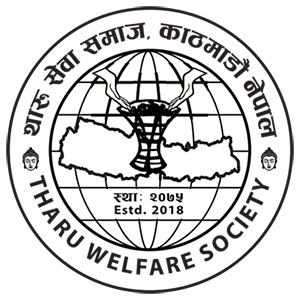For my present guide task, we invested section of final week-end exceeding a summary of 13,542 documents and group tests done during the Army War university since 1950. Many of them had been everything you might expect, such as for instance two from 1952: “The Soviet Railroad System” and ” The Soviet Iron and Steel business.” Some .
For my present guide task, we invested element of final week-end groing through a summary of 13,542 documents and team studies done during the Army War university since 1950. Many of them had been that which you might expect, such as for example two from 1952: “The Soviet Railroad System” and ” The Soviet Iron and Steel business.” A number of them are downright frightening, such as 1953’s “A United States Program when it comes to Post-World War III Peace.”
And you will find the perennials that are hardy such as for instance “Retention of Junior Officers” (1959), “Kashmir Dispute – Appropriate United States Role” (1964), “Haiti: Another Abscess when you look at the Caribbean” (1966) and “the ongoing future of Stability Operations” (1970). With a few updates in names and figures, an inspired but unethical student most likely could re-submit any one of those documents now.
A few of them simply allow you to be shake your face. In 1961, one officer learned “The Missile Killer Belt: The Ballistic Missile Defense into advanced writers.com the future.” (You want to speak about government investing? Exactly how many multi-billions of bucks gets the Pentagon used on ballistic missile protection during the last 40 years?) And talking about tossing good billions after bad, there was 1963’s hopeful “Pakistan: A United States Investment.” Yep, i am certain it will probably spend any decade off now.
But there were some surprises if you ask me, like just exactly exactly how numerous documents had been done on unconventional warfare within the 1950s, which armed forces historians tend to depict as 10 years whenever everybody was dedicated to nuclear warfare. And also a number of that stuff on nuclear warfare appears interesting, such as 1958’s “Critique of Kissinger’s Strategic Force – Tactical Force Concept.”
We additionally had been amazed at exactly just how little written concerning the Korean War. It simply appears not to happen most important into the collective head associated with the Army. Indeed, Vietnam generally seems to get almost since much attention in the mid-’50s, with documents such as Richard Stilwell’s “The Indochina Contest,” done in 1955, and another paper in 1958, “Military Strategy in Southeast Asia.”
After which, fifteen years later on, this topic that is sorrowful “Lesson from My Lai.”
You will find diets. Plenty of papers about energy when you look at the belated 1970s. Then, “Contemporary Terrorism,” written in 1982, marks the beginning of a new trend. After an extended lack, the Civil War begins turning up once again within the ’80s, though in little figures set alongside the very early several years of the twentieth century, when it dominated. Into the 1970s, computer systems are a curiosity that is occasional some documents. Within the late 1980s, they start turning up in vast quantities, like in “the effective use of Microprocessor Technology in Enhancing eliminate product Effectiveness” (1987). Into the ’90s, the term ended up being “digitization.” within the final ten years it ended up being “networks.” The late ’80s additionally saw a spate of documents on the army’s part in “the war on medications.” The ’90s are high in “revolutions” in a variety of areas, such as for example “military engineering,” in 1997.
The papers by future generals don’t stick out specially. One of the most one that is interesting become Alexander Haig’s “Military Intervention: a research study of Britain’s usage of Force within the 1956 Suez Crisis,” printed in 1966. More typically, in 1985, there is Tommy R. Franks on “an Corps that is alternative Concept Winning the AirLand Battle.”
Within the documents printed in the wake of 9/11, I’d anticipated to view a torrent of documents on terrorism, Islamic extremism, the Soviet experience with Afghanistan and such. There have been a couple of, however in basic the documents for 2002 seemed just about like previous years, featuring studies of “U.S. Overseas Fresh Water Policy,” “Vince Lombardi as being a Strategic Leader, ” and “Major General William S. Rosecrans additionally the change associated with the Staff associated with the Army of this Cumberland: a full Case research.” Plus, of program, an officer that is naval 2007 contribution, “Algae: America’s Pathway to Independence.” You can’t accuse them of all of the operating into the soccer ball.
You can find few illusions reflected into the games through the post 9/11-era. From 2004, this paper, from an Army Reservist, intrigued me: “Operation Iraqi Freedom – An Unjust War.” Two years later on, an Army officer discussed, “Iraq: how exactly we May Lose the War We Won.”
Overall, the hole that is biggest, I would personally say, is just a long-lasting propensity to review foreign strategic issues, not to look at battles or wars that failed to include US forces. There are some, and so they generally appear to involve Germans, frequently the battle of Kursk. As an example, I happened to be amazed to not ever see a report of this Iran-Iraq War –though a percentage that is small of documents are simply marked “CLASSIFIED,” and therefore may where such documents are concealed.
Additionally, you can find that i simply intend to read for fun to my next research journey, such as for example, “1953: Creighton W. Abrams, ‘Mobility and Firepower.’”
